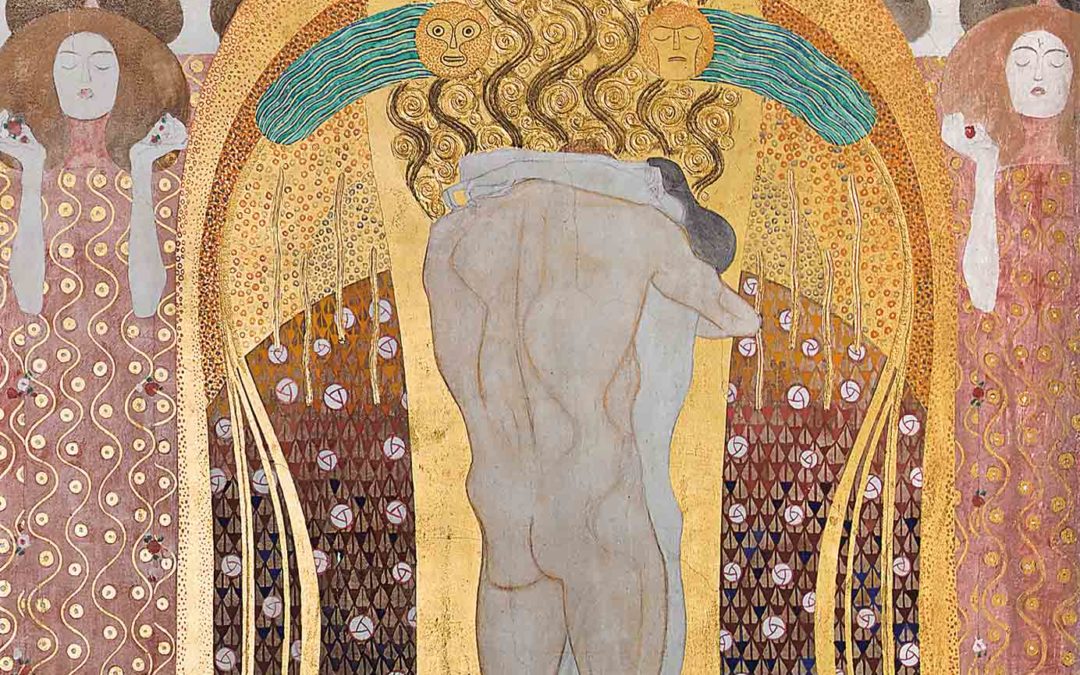Klimt's Beethoven Frieze
1902
Of the Vienna Secession exhibitions taking place between 1897 and 1905, the 14th exhibition (April 15th – June 27th, 1902)—dedicated entirely to the musician Ludwig van Beethoven (1770-1827) and the commemoration of the 75th anniversary of his death—was certainly among the most important. The centrepiece of the show was a sculpture of Beethoven by Max Klinger [1], which had been completed shortly prior to the exhibition on March 25th, 1902. This was an important piece to the Secessionists and they were intent on bringing it to the city in which Beethoven had created his greatest works. Their aim was to exhibit it, and, hopefully, to keep it here.
Josef Hoffmann was responsible for the spatial layout of the exhibition. There was a need to create an appropriate framework for Klinger’s work and to delineate a clear overall concept for the entire exhibition. A particularity of the exhibition was that none of the works were signed with the names of the artists, but rather with their initials [2]. Additionally, to this day the catalogue is regarded as one of the most artistically accomplished exhibition publications of the time [3].
The route through the exhibition started in the left side wing with Gustav Klimt’s “Beethoven Frieze” [4-5]. Today, this monumental allegorical work is regarded as a prelude to his “Golden Phase,” and as a key work in the development of the artist toward the movement of Symbolism. The overall design is characterized by the flat isolation of the human figure, lines that emphasize content, and dominating ornamental shapes.
The wall paintings are executed in casein and gold colours and make up a frieze over 34 meters in length. They are painted onto the top half of the two longitudinal walls and one of the end walls, and are to be read left to right. The thematic layout follows a description of Ludwig van Beethoven’s 9th Symphony by Richard Wagner.
Initially, the Beethoven Frieze was only intended to be an ephemeral work for the 14th Secession exhibition and, like the other decorative paintings, was to be removed and destroyed after the exhibition closed. It is only due to fortunate circumstances that the frieze was not destroyed as planned. Since a Klimt retrospective was to take place the following year, the decision was made not to remove the work at that time. In 1903, the collector Carl Reininghaus purchased the frieze, which was cut into seven pieces to be removed from the wall and was subsequently stored for 12 years in a furniture depot in Vienna, until Reininghaus sold it in 1915 to the industrialist August Lederer. Lederer was one of Klimt’s most important supporters, and was the owner of what was probably the most extensive and important collection of Klimt pictures in private hands at that time. In 1938, the Lederer family was dispossessed and the frieze put under “state administration.” After the end of the Second World War, Erich Lederer decided to sell the frieze to the Republic of Austria. The Secession building was eventually renovated, and the wall cycle has been permanently accessible to the public since 1986.



